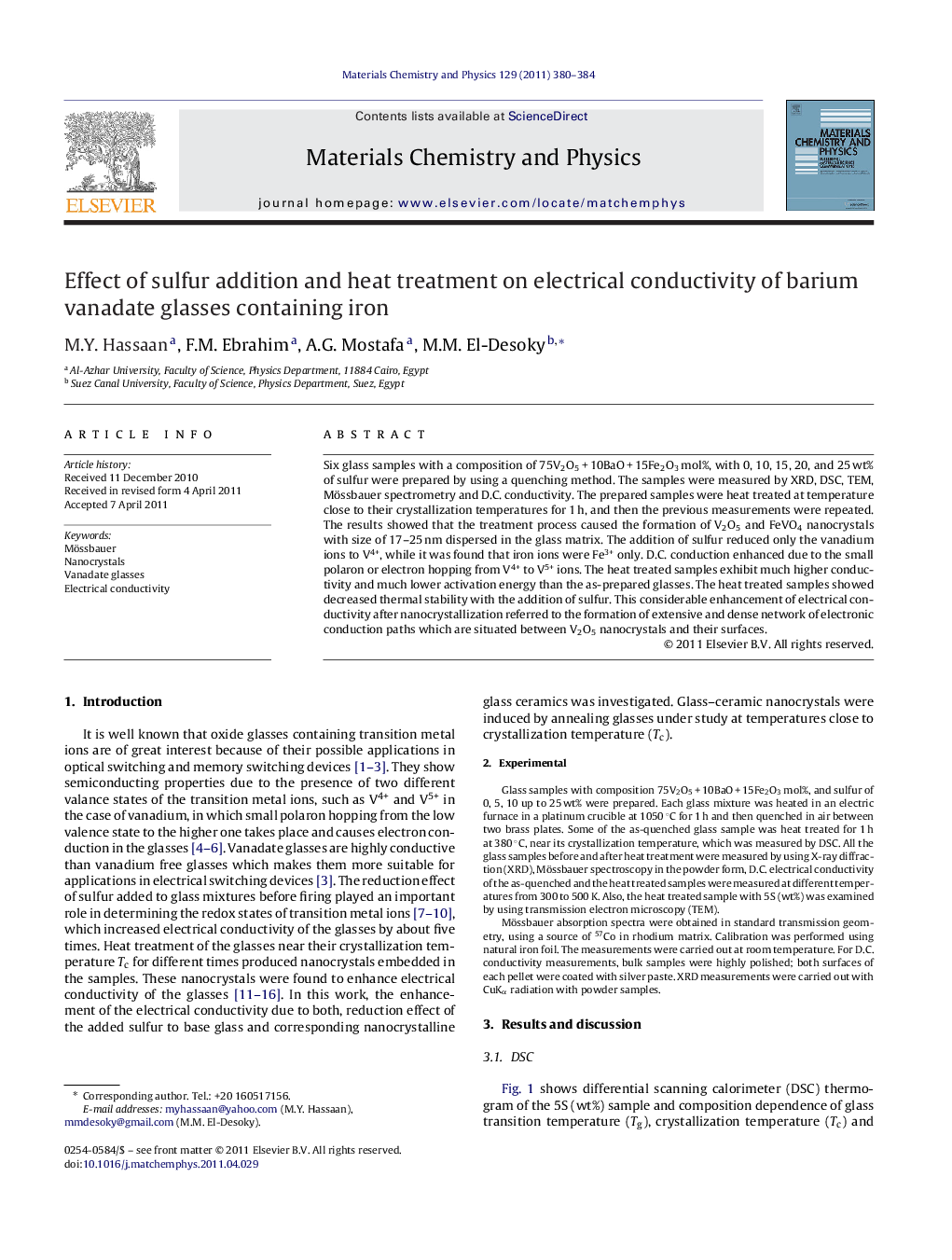| Article ID | Journal | Published Year | Pages | File Type |
|---|---|---|---|---|
| 1524544 | Materials Chemistry and Physics | 2011 | 5 Pages |
Six glass samples with a composition of 75V2O5 + 10BaO + 15Fe2O3 mol%, with 0, 10, 15, 20, and 25 wt% of sulfur were prepared by using a quenching method. The samples were measured by XRD, DSC, TEM, Mössbauer spectrometry and D.C. conductivity. The prepared samples were heat treated at temperature close to their crystallization temperatures for 1 h, and then the previous measurements were repeated. The results showed that the treatment process caused the formation of V2O5 and FeVO4 nanocrystals with size of 17–25 nm dispersed in the glass matrix. The addition of sulfur reduced only the vanadium ions to V4+, while it was found that iron ions were Fe3+ only. D.C. conduction enhanced due to the small polaron or electron hopping from V4+ to V5+ ions. The heat treated samples exhibit much higher conductivity and much lower activation energy than the as-prepared glasses. The heat treated samples showed decreased thermal stability with the addition of sulfur. This considerable enhancement of electrical conductivity after nanocrystallization referred to the formation of extensive and dense network of electronic conduction paths which are situated between V2O5 nanocrystals and their surfaces.
► Selected glasses of V2O5–BaO–5Fe2O3 system have been transformed into nanomaterials by annealing at temperature close to crystallization temperature (Tc) for 1 h. ► Glass ceramic nanocrystals are important because of their physical properties which are not obtainable in other classes of materials. ► Crystal and grain sizes are the most significant structural parameters in electronic nanocrystalline glassy phases. ► These phases have very high electrical conductivity, hence glass–ceramic nanocrystals are expected to be used, for example, as a gas sensor.
